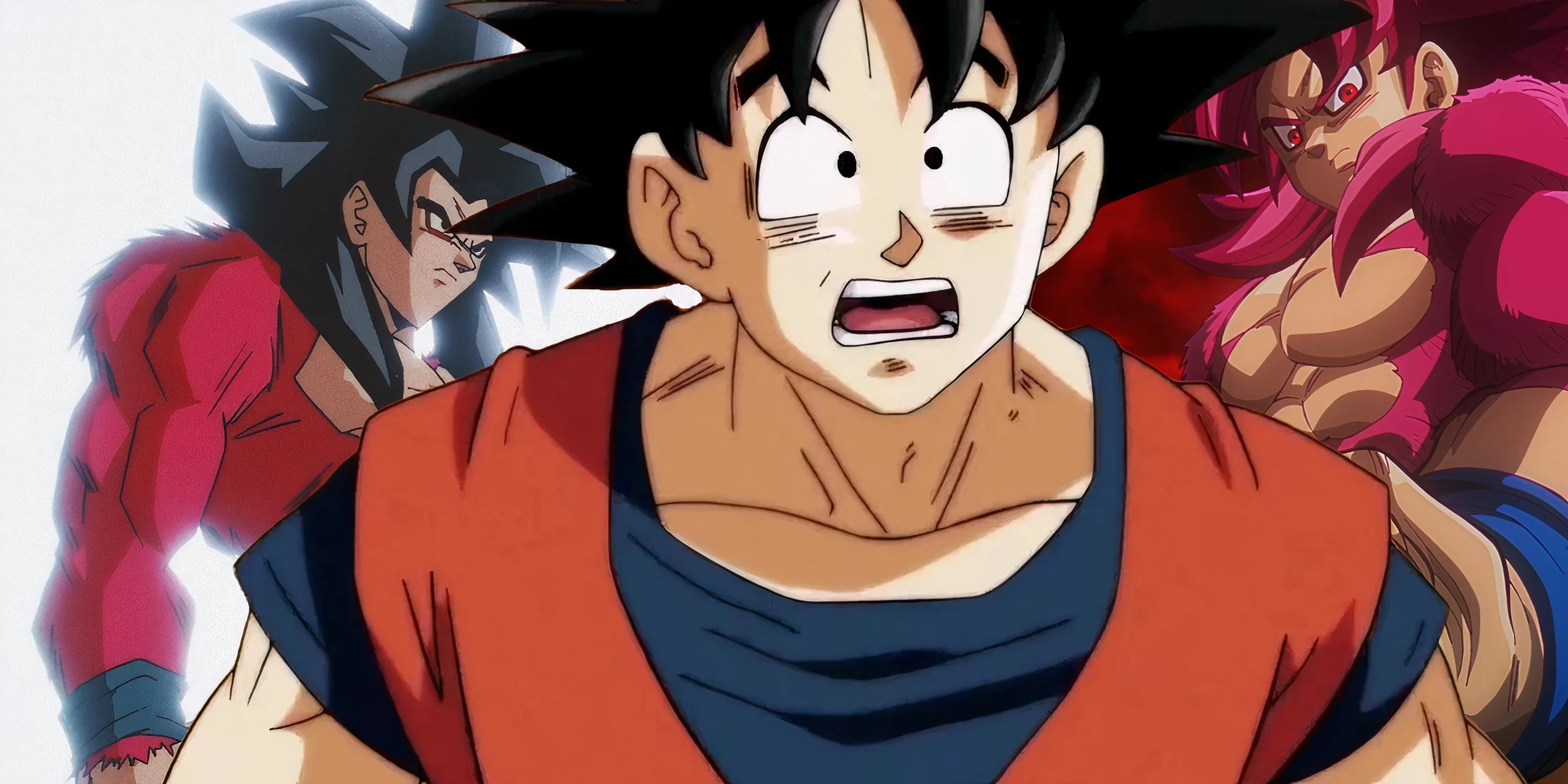Although many fans remember it fondly,it’s no secret thatDragon Ball GThas gained a bad reputation over the years. Many viewers take away value fromDragon Ball GTfor not being created by Akira Toriyama, pointing out its inconsistencies and criticizing its treatment of important characters. However,Dragon Ball GTnegatively affected the franchise for another unexpected reason.
Despite the anime enjoying a fair success and delivering an emotional conclusion to Goku’s story, its place in the canon has always been a point of controversy. Even though Akira Toriyama himself referred tothe series as a “grand side story of the originalDragon Ball” (viaKanzenshuu), Dragon Ball GTunfortunately held back the franchise’s potential going forward.

Dragon Ball’s Timeline Was Deliberately Kept Ambiguous
Dragon Ball Super’s Story Only Has a Narrow Timeframe to Work
Dragon Ball GT’s negative impact on the franchise’s future has more to do with how it was treated as part of the anime’s continuity and not so much with its quality. While there is no official statement ofDragon Ball GT’s canon status from Toei Animation, it has been referenced before as part of the anime’s timeline.
The additions to the franchise followingDragon Ball GT,Super,andDaimahave placed their stories within the 10-year timeframe between the Majin Buu arc’s ending andDragon Ball Z’s canonical finale. This creative decision was likely made toavoid overwriting “End of Z” andDragon Ball GT, but it has limited the options for potential future installments.

Acknowledging thatDragon Ball GTtakes place in an alternate timelinegivesSuperroom to continue indefinitely without being tied to the obligation of ending at the 28th World Martial Arts Tournament. This was the case with the filmFarewell Space Battleship Yamato, which has its own continuity after its ending was altered in the anime to continue the franchise.
Dragon Ball Daima Took the Best Parts of GT
Dragon Ball GTbrought a dose of nostalgia to longtime fans, preventing the series from stagnating by returning Goku to his childhood state, before he became overwhelmingly powerful. However,Dragon Ball GTstruggled with its direction as it attempted to blend the tone and narrative of the original series withZ, whose focus shifted from adventures to more flashy battles.
This led toGT’s initial space adventure being criticized, while transformations such as Super Saiyan 4 and Gogeta were considered the series' best moments. This deeply influencedDragon Ball Daima, which was revealed toshare the same spirit asGT, as proved by its similar elements and, especially, the introduction of a reimagined version of Super Saiyan 4.

That means that although Toei Animation was adamant about never outright denyingGTas part of the anime’s timeline, likely preventing a negative impact on sales, they deemed it necessary for the franchise inDragon Ball Daimato open the door to future exploration with another version of Super Saiyan 4, just as it was done with Broly and Gogeta.
Dragon Ball’s Franchise Has Deliberately Avoided Surpassing Toriyama’s Ending
Dragon Ball Super Shouldn’t Be Afraid to Step Beyond the End of Z
The backlash to many elements ofDragon Ball GTand its overall negative reception in comparison to the explosive popularity of Super have unintentionally conditioned the franchise to connect to the “End of Z” to avoid straying from Toriyama’s original vision, creating a misconception among many fans that anything not written directly by him is not worth their time.
However, limitingDragon Ball Superto merging withZ’s ending has sapped the series of tension and weight. By being set in a world at peace where all the characters are safe and sound, it preventsDragon Ball Super’s story from deviating too much, such as with major deaths, so that it doesn’t become completely incompatible with Toriyama’s ending.

This changed following Toriyama’s passing, withDragon Ball Superbeing at a crossroads, as the manga is chronologically only a year away from the “End of Z.” Due toDragon Ballconfirming that it will continue for decades, the anime will likely expand on Toriyama’s framework with non-canon installments that allow more flexible plotlines not committed to an overarching conclusion.
Dragon Ball GT Fails In its Approach to Revamp the Franchise
Dragon Ball GT Is An Important Part of the Series' Legacy
Dragon Ball GThas positive traits, like exploring the lore of the dragon balls and its finale that beautifully wraps up Goku’s journey. However,Dragon Ball GTalso received backlash due to the abandonment of important characters, like Vegeta, Gohan, and Piccolo, who were replaced by Trunks and Pan in an attempt to bring the spotlight to the new generation.
This reinforces howDragon Ball GT’s biggest mistake was ignoring the fact that many fans wanted to see more about the Z warriors, proven by how theTournament of PowerandDragon Ball Super: Super Herowere a success by bringing back characters who were away from the main battles, such as Gohan and Piccolo.

Avoiding stepping intoDragon Ball GT’s territory only led to constraining the franchise, creating unnecessary hate for the series by reducing it to canon debates without many viewers recognizing its virtues. Nevertheless, acknowledging thatDragon Ball GTstrays from the main continuity won’t erase the enjoyment that it has brought to fans and gives unlimited potential to the franchise’s future.
Dragon Ball GT
Cast
Dragon Ball GT is the third series in Akira Toriyama’s most famous anime franchise. However, it is the first one not to adapt a manga storyline. Set after the events of the Buu Saga, Dragon Ball GT sees Goku and the Z-Warriors battle powerful villains such as Baby, Super 17, and the Shadow Dragons. 18 years after the 64-episode show was met with a lukewarm reception, Dragon Ball Super replaced it in the anime’s official continuity.